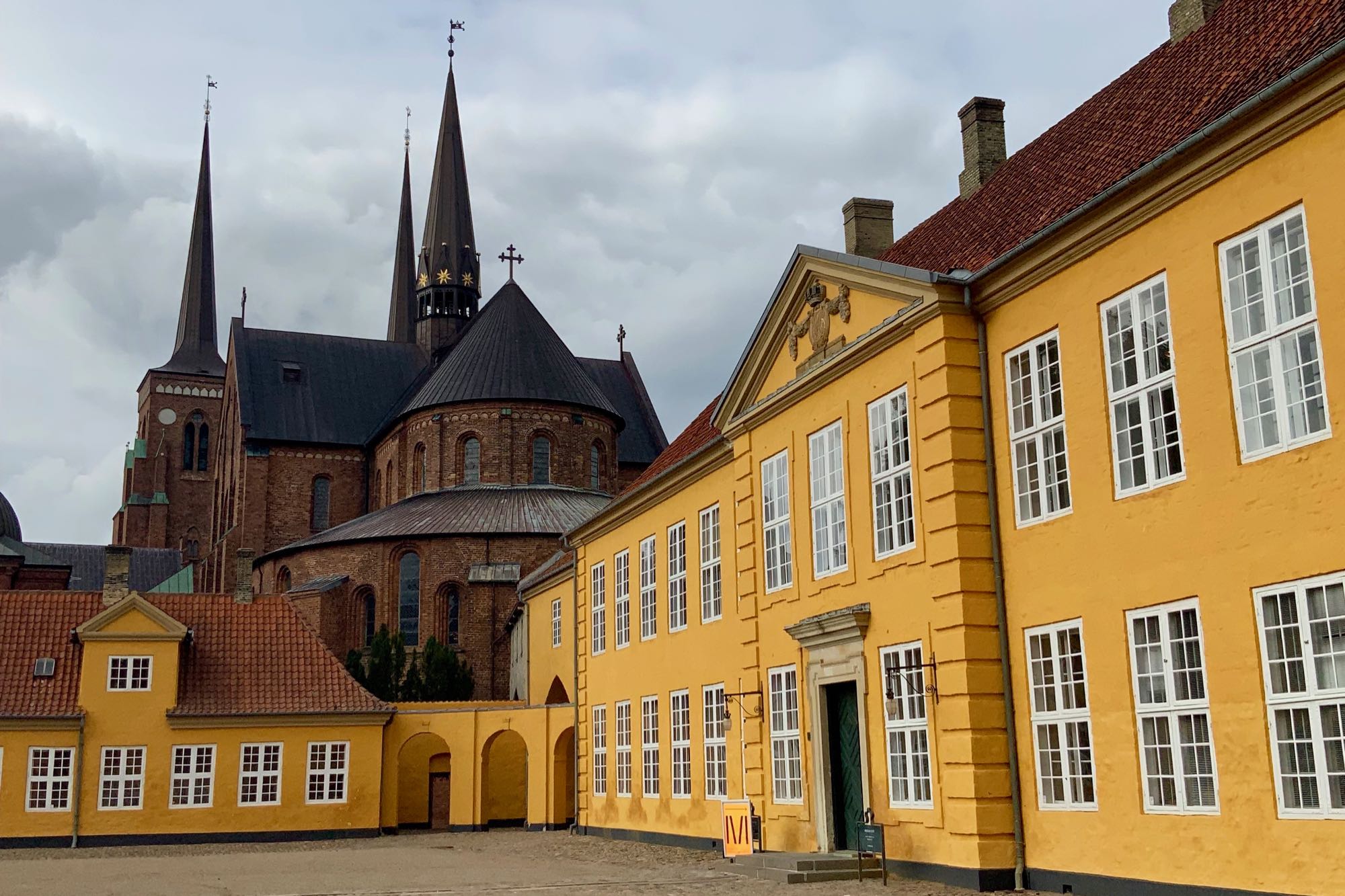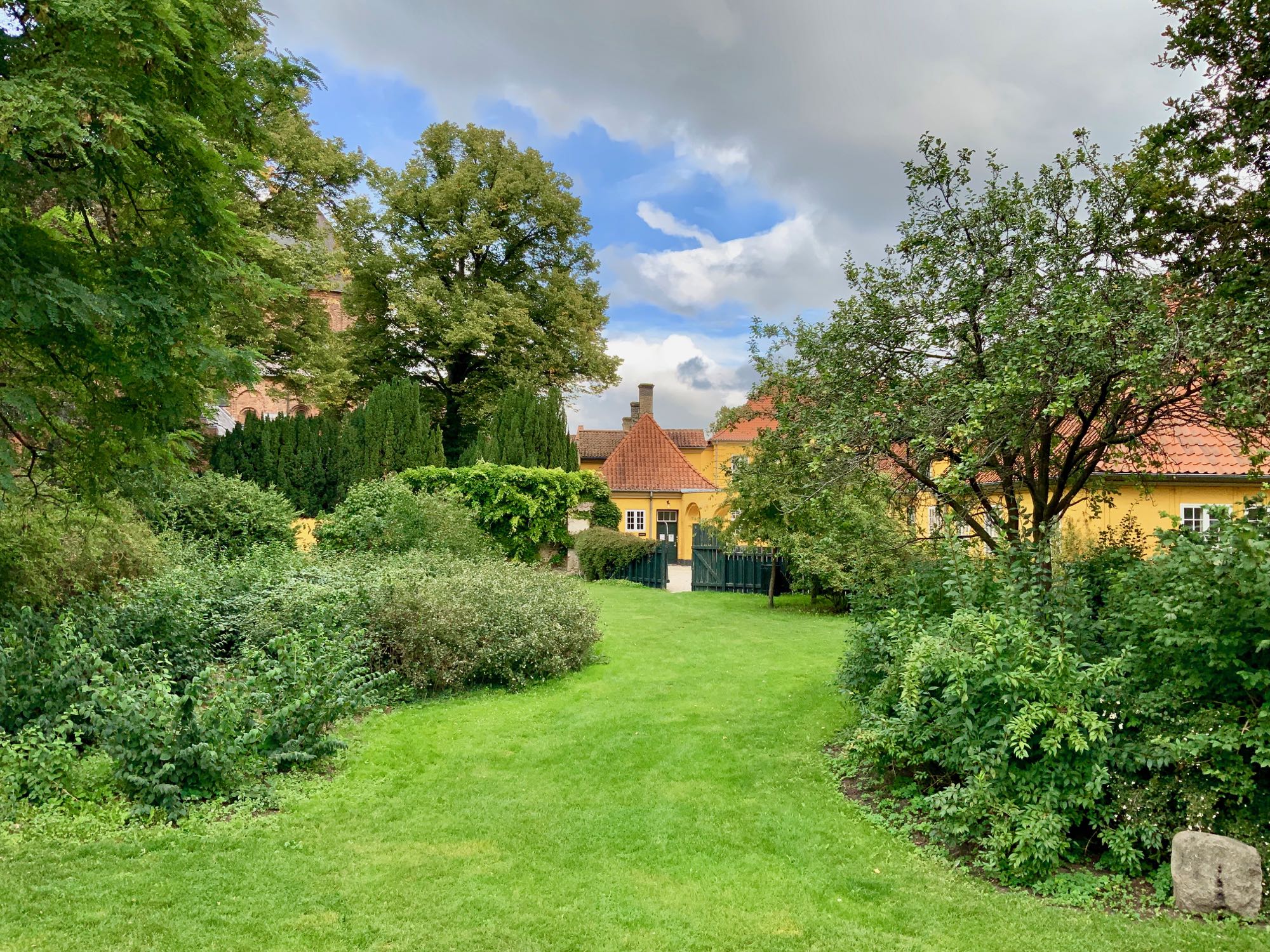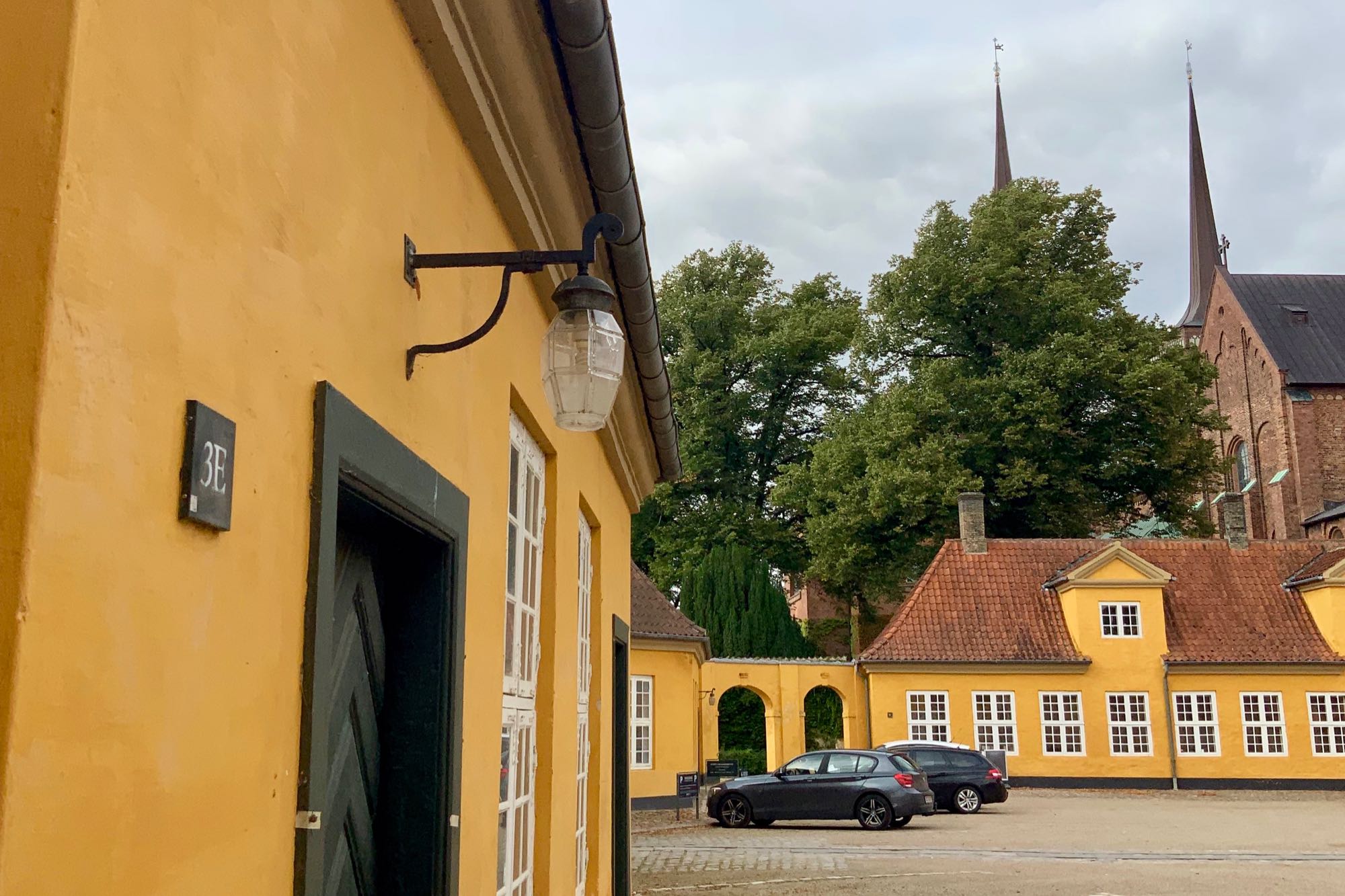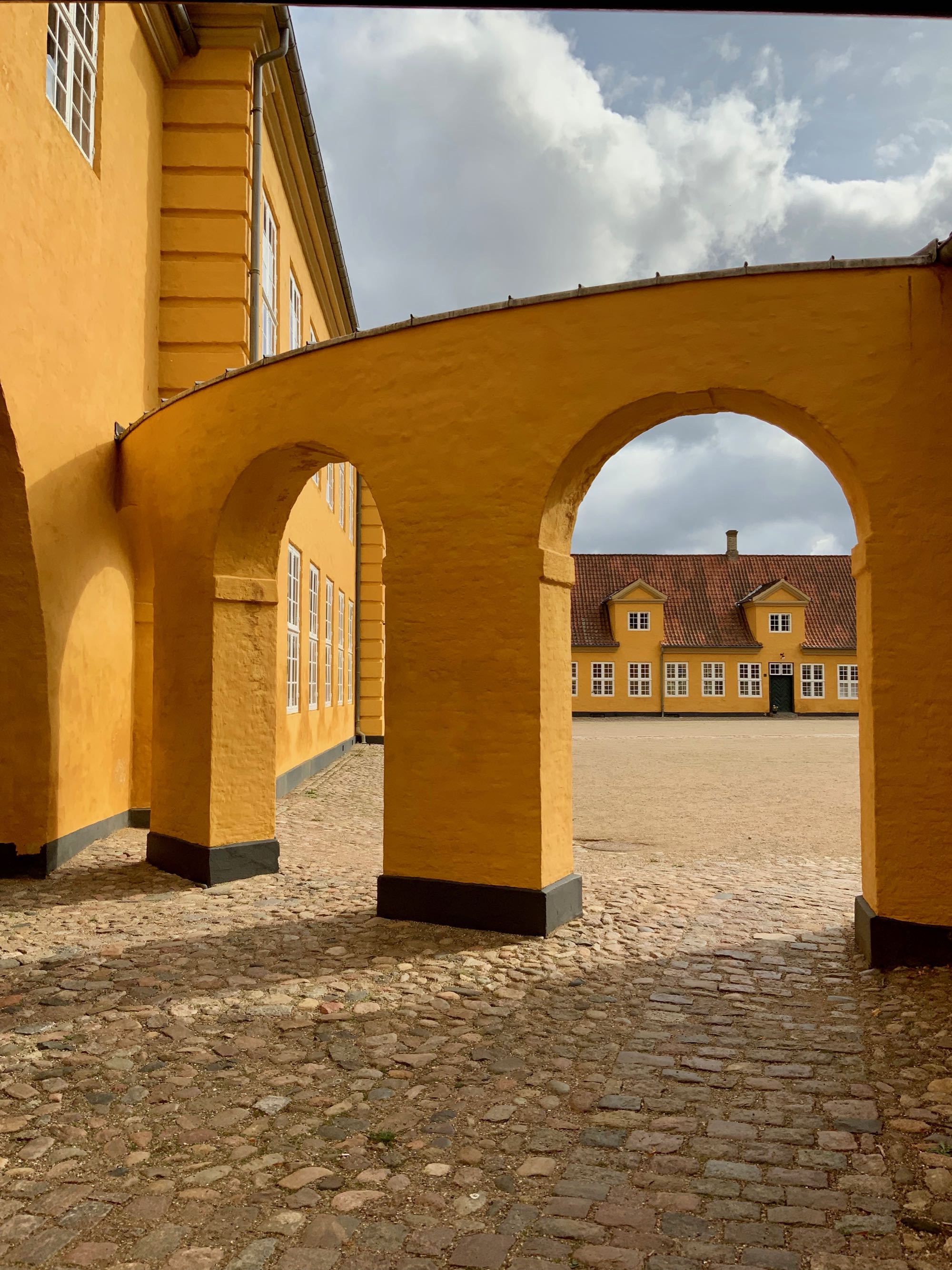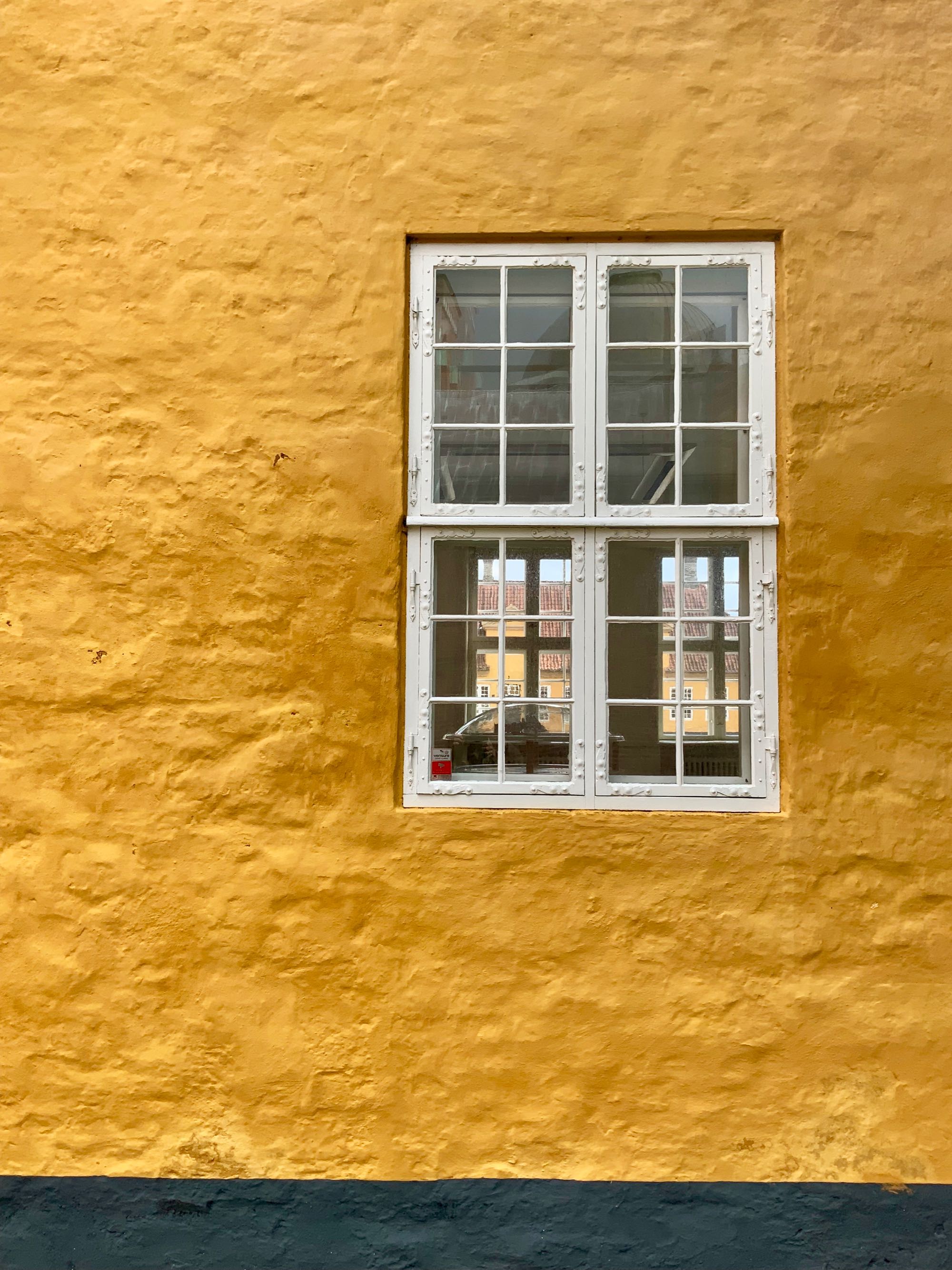The royal past is undeniable in the Royal Palace. This symmetrical baroque palace with side wings stands alongside Roskilde Cathedral, and merely observing the meeting between these two buildings is a delight for all those who enter the palace courtyard. The Royal Palace was built as a residence for the royal family when they were in Roskilde to participate in church ceremonies. The stables were designed for horses, carriages, linens, silverware and other things that the royals brought in tow.
The palace did not remain a royal residence for long, and since then the building has served a variety of functions, the most famous being the meeting place of Øernes Stænderforsamling (The Islands' Assembly of the Estates of the Realm) in the years 1835-48. This organization laid the groundwork for the introduction of democracy in Denmark in 1849.
The Royal Palace is now home to the Museum of Contemporary Art, which has a nice little art bookstore and Roskilde’s best kept cafe secret. In the side wings, Roskilde Art Association invites the public to view exhibitions free of charge. Take a walk around the palace and enjoy the incredibly peaceful palace garden in the courtyard, with a view to the cathedral, place and Byens hus (The City’s House). Walk through the vaulted passageway to the cathedral and take note of the Absalon Arch connecting the church and palace. Like many of the city’s oldest medieval churches, this arch is built with blocks of limestone, was formed by the calcium-rich springs that were once so common in Roskilde.
Facts
Today, the Royal Palace is a bishop’s residence and the headquarters of Roskilde Diocese.
The bricks used to build the Royal Palace are visible under the lime surface coating, which is not the norm for baroque buildings. It is said that they didn’t have time to plaster the facade.
Surroundings
Roskilde’s city center is rich in architectural works and urban spaces. Discover the undeveloped field Provstevænget, which in the Middle Ages was home to an entire city neighborhood, but is now an open space with gravel paths and an exceptional views of the fjord. A little further west, you’ll find Maglekilde Maskinfabrik (Machinery Factory) on the street Maglekildevej, and the idyllic St. Jørgensbjerg neighborhood, where the half-timbered houses surround one of the country’s oldest churches.
